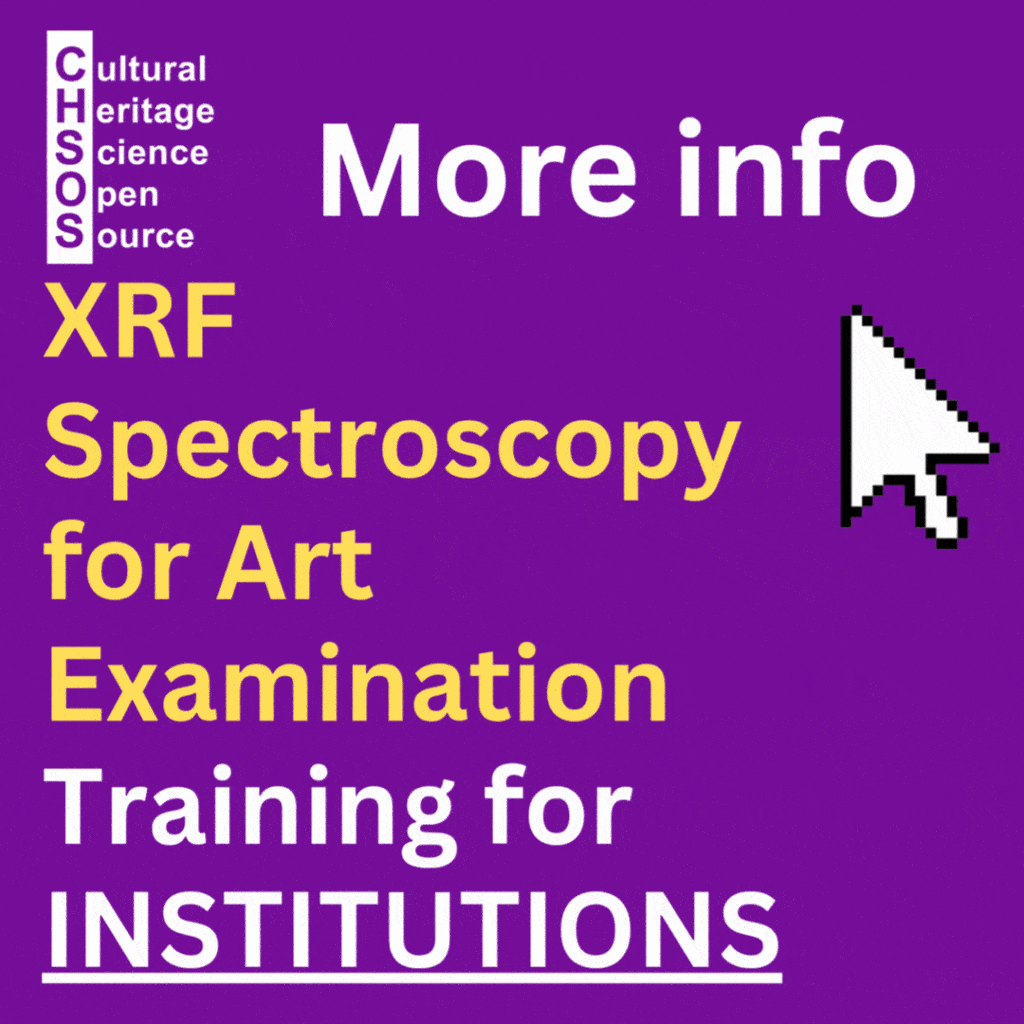
Lesson: ATR FTIR Spectroscopy – Parchment
This lesson focuses on the use of Attenuated Total Reflectance Fourier Transform Infrared (ATR FTIR) spectroscopy as a non-invasive technique for analyzing both parchment and iron gall ink. The lesson will demonstrate the ability of ATR FTIR to identify organic compounds like collagen in parchment, detect additives such as calcium carbonate, and characterize degradation products in iron gall ink.
Objectives:
- Understand the principles of ATR FTIR spectroscopy and its application in cultural heritage science.
- Learn how to analyze and interpret spectra from parchment to detect collagen degradation and conservation treatments.
- Identify chemical components in iron gall ink using ATR FTIR and interpret the presence of sulfates and degradation products.
- Gain familiarity with coatings and additives in historical parchment through spectral analysis.
Materials:
- Handheld FTIR system with an ATR diamond cell probe
- Modern parchment
- 16th-century antiphonary (historical parchment)
- Historical manuscript with iron gall ink
Lesson Plan:
1. Introduction to ATR FTIR Spectroscopy:
- Overview of ATR FTIR as a non-destructive technique for identifying organic and inorganic compounds in historical objects.
- Explain the principles of ATR, emphasizing how the technique focuses on surface-level analysis, sensitive to only a few microns of the object.
2. Demonstration: Acquisition of Spectra on Parchment:
- Step 1: Acquire a spectrum of modern parchment.
- Position the probe for optimal contact and analyze the primary, secondary, and tertiary amide peaks, which are characteristic of collagen.
- Discuss the significance of these peaks and how they represent the basic structure of parchment.
- Step 2: Compare the spectrum of modern parchment with the historical 16th-century antiphonary parchment.
- Highlight similarities in collagen absorption bands and discuss how these spectra help identify the preservation state of historical materials.
3. Identifying Coatings on Parchment:
- Measure both the hair side and the flesh side of the historical parchment.
- Identify the presence of calcium carbonate (used to make parchment whiter or more suitable for writing) by analyzing its characteristic absorption bands in the spectrum.
- Discuss the significance of coatings and conservation materials, and how ATR FTIR can detect these surface treatments.
4. Analysis of Iron Gall Ink with ATR FTIR:
- Step 1: Acquire a spectrum of iron gall ink on parchment or paper.
- Analyze the spectral features of iron(II) sulfate, a key component of iron gall ink, and discuss the peaks of degradation products such as oxalates.
- Step 2: Compare the spectra of ink on parchment with modern references (e.g., gypsum and oxalates).
- Discuss the role of sulfates and oxalates as indicators of ink degradation and environmental exposure.











